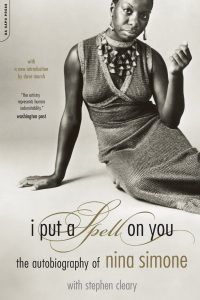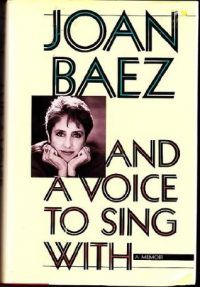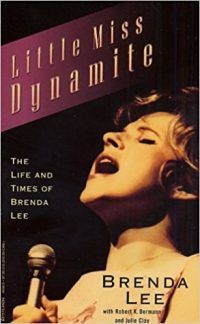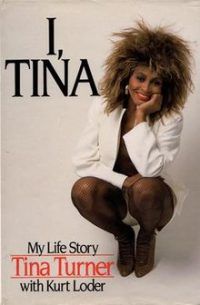
Women Who Rock: 5 Stories of Women in the Rock & Roll Hall of Fame
The line between autobiography and memoir has always been a blurry one for me. Writer’s Digest notes the similarities while also suggesting:
Autobiography focuses on the chronology of the writer’s life while memoir covers one specific aspect of the writer’s life.
How valid that is in a reading world where genre has less and less importance other than “where to shelve this in the library/store so people who want to read it can find it” is questionable and, to be honest, it doesn’t really matter. What does matter is hearing about people’s, about women’s, experiences in their own voices.
Like the film and television industries, the music industry can be a place of creativity, innovation, and expression; it can also be ugly, cruel, and misogynistic, with women—particularly women of color—being exploited and abused by executives, managers, and even fellow performers. While each of the singers herein faced different challenges, they each fought for every hit single, every recording session, and every dollar, to become music legends and inductees to the Rock & Roll Hall of Fame.
 I Put A Spell on You: The Autobiography of Nina Simone by Nina Simone (with Stephen Cleary)
I Put A Spell on You: The Autobiography of Nina Simone by Nina Simone (with Stephen Cleary)
Nina Simone has always been a bit of an enigma: a classical pianist–turned–nightclub singer who became a jazz legend, she worked on her autobiography for nearly 30 years before it went to press in 1991. One of eight children, Simone was raised, primarily in the Carolinas, in a family one might categorize as “non-traditional” for the ’30s and ’40s: her father went through several extended periods of unemployment and illness and it was her mother, an ordained Methodist minister, who acted as breadwinner. Friends and neighbors supported Simone’s dreams of being a musician, donating to a fund that paid for piano lessons and eventually sent her to Julliard for a year in preparation for another program to which she was never admitted, not because she lacked the skills, but because she was black. She started singing in clubs to pay the bills and the rest, well…I’d recommend grabbing the book so you can hear it from Simone herself. A sexually liberated divorceé before it was fashionable, a single mother, a member of the Civil Rights movement who eventually came to view non-violence as insufficient, underpaid, sexually assaulted on numerous occasions, Simone’s life is both tragic and remarkable and her fame a hard-won war in an “unjust and troubled world.”
 And a Voice to Sing With: A Memoir by Joan Baez
And a Voice to Sing With: A Memoir by Joan Baez
I think it’s only fair to admit at the outset this is the only book on the list I didn’t finish: while it does proceed chronologically, it felt scattered and tangled to my order-loving brain, with fact and even Baez’s own thoughts difficult to separate from a haze of words I imagine is the literary analogue to actually having lived through the ’60s. I wonder if some of the lack of clarity is due to the fact Baez didn’t have a coauthor (you’ll note all of the other books contained herein do, as do most of the other musical memoirs/autobiographies I found in the course of my search). That said, what I gleaned from the first fifty or so pages is fascinating: the child of an interracial marriage (her mother was white and her father an immigrant from Mexico) which simply wasn’t done in the ’40s, Baez and her sisters moved from coast to coast several times as children, and even lived in Baghdad for a year, in the course of her father’s career as a physics professor vocally opposed to the atomic bomb. Baez had few friends growing up because, in her own words, “…there I was, with a Mexican name, skin, and hair; the Anglos couldn’t accept me because of all three, and the Mexicans wouldn’t accept me because I didn’t speak Spanish,” though she eventually found the acceptance she craved in the Boston folk scene and the Civil Rights movement, participation in both of which eventually brought her into the national spotlight and took her all over the country, and the world; many of those trips were in support of grassroots political movements which brought her into conflict with ruling regimes; Baez was nothing if not principled and courageous. She also knows what the people want, writing frankly of her failed marriage, her affair with Bob Dylan, and the effort one must put into evolving one’s art and staying relevant as decades pass.
 Little Miss Dynamite: The Life and Times of Brenda Lee (with Robert K. Oermann and Julie Clay)
Little Miss Dynamite: The Life and Times of Brenda Lee (with Robert K. Oermann and Julie Clay)
Brenda Lee (born Brenda Mae Tarpley) reinvented herself several times in the course of her career: child star, teen idol, pop sensation, “Star,” and country singer, refusing to cede her place on the charts to the younger replacements who popped up with each new musical fad. The daughter of a somewhat nomadic couple, who migrated back and forth between Atlanta and rural Georgia (at one point living one block away from a 12-year-old Martin Luther King Jr.), often living in poverty, doing whatever jobs they could to sustain their family. When Brenda started singing on the radio at the age of six, and as she gained popularity through her early teens, she did so as a means of contributing to the family income, though her finances were set up such that neither she nor her parents (or later her stepfather) were able to access the majority of her earnings in trust (though she later sued for emancipation after she married and had a child at 18). Never formally trained, Lee was one of the first real female pop stars, commanding impressive fees and mobbed by fans wherever she went. All of that said, she was beholden, for years, to an authoritarian manager, who both made and broke her; traded as a commodity by her record company; and forced to maintain a grueling, punishing schedule for the benefit of those who made money from her name and her talent. Though certainly more naïve than Simone, Turner, or James, and though her being white bought her far more freedom, it wasn’t until Lee was in her 40s, after a career of more than 30 years, that she discovered her own worth and was truly able to come into her own as a person. By turns charming and sad, this is the music world of the ’50s and ’60s from an entirely other perspective and definitely worth the read. Besides, she has great stories about dancing backstage with Elvis when he was only just starting to perform and she was a little girl; Chubby Checker teaching her to twist; and, among other tales, performing on a package tour with a then unknown foursome who called themselves The Beatles (John Lennon apparently liked to pee off of hotel balconies into pedestrians).
 I, Tina: My Life Story by Tina Turner (with Kurt Loder)
I, Tina: My Life Story by Tina Turner (with Kurt Loder)
Inducted: 1991 (with Ike Turner)
There is absolutely nothing I can write here that will do justice to Tina Turner’s courage, perseverance, and determination to be her authentic self. Born Anna Mae Tarpley in Nut Bush, Tennessee, just before World War II began in earnest, Turner’s early years were spent being shunted from relative to relative while her parents worked or, later, went about their lives as though they hadn’t had children in the first place. Like Lee, Turner had no formal training as a singer, not even aware of her own abilities until one of her custodial grandmothers put her in the church choir. Turner learned how to pick cotton by day as she learned about the wider world through movies, jazz, and proto-rock by night. She met Ike Turner in a dark club in East St. Louis. When he heard her sing, Ike Turner realized Ann Mae could be his ticket to the big time; he used his charm to recruit her into his band. Though both classify the early part of their relationship as brother-sister, they later became sexually involved and Ike became controlling and abusive. Pregnant with her second child, who was also Ike’s, Tina was terrified to leave and agreed to marry Ike to save her life and those of her children. The more popular the duo became, the more desperate Ike was to remain on top, the more controlling and abusive he became. After 16 years of living in terror, bruises, broken bones, and Ike’s numerous extra-marital affairs, Tina risked her career, her financial solvency, and her life, to leave him with her two children and two “step” children (it’s complicated), living hand to mouth while she reinvented herself as a solo artist in her (gasp!) 40s. You have to read this one to get the full sense of Turner’s story, of the seemingly-insurmountable obstacles she overcame to win her freedom and her authentic self.
 Rage to Survive: The Etta James Story by Etta James (with David Ritz)
Rage to Survive: The Etta James Story by Etta James (with David Ritz)
This one is not an easy read but it is an important one. James is a fascinating woman and she has crafted a fascinating memoir, but know going in her life hasn’t been an easy one and she is brutally honest about it all, from her contentious relationship with her mentally ill mother (only 14 when James was born), to James’s own struggles with addiction and recovery, to the frequently-abusive men who entered her life. Never one to shrink from confrontation, Etta James is up front about the fact she is angry and that being in a perpetual state of rage has been both a comfort, as it drives her to continue to make music, and has, at the same time, forced her to build a barrier between her and the world that has made her “difficult” to relate to, to work with, and simply to be around. A bit more stream of consciousness than I typically care for, be prepared to backtrack occasionally if you want to keep the chronology straight, but Etta James’ story is entirely worth your effort.
Other Rock & Roll Hall of Fame inductees who have written autobiographies and memoirs include: Wanda Jackson, Deborah Harry, and Aretha Franklin. I’ll certainly be seeking their voices in the future.



















